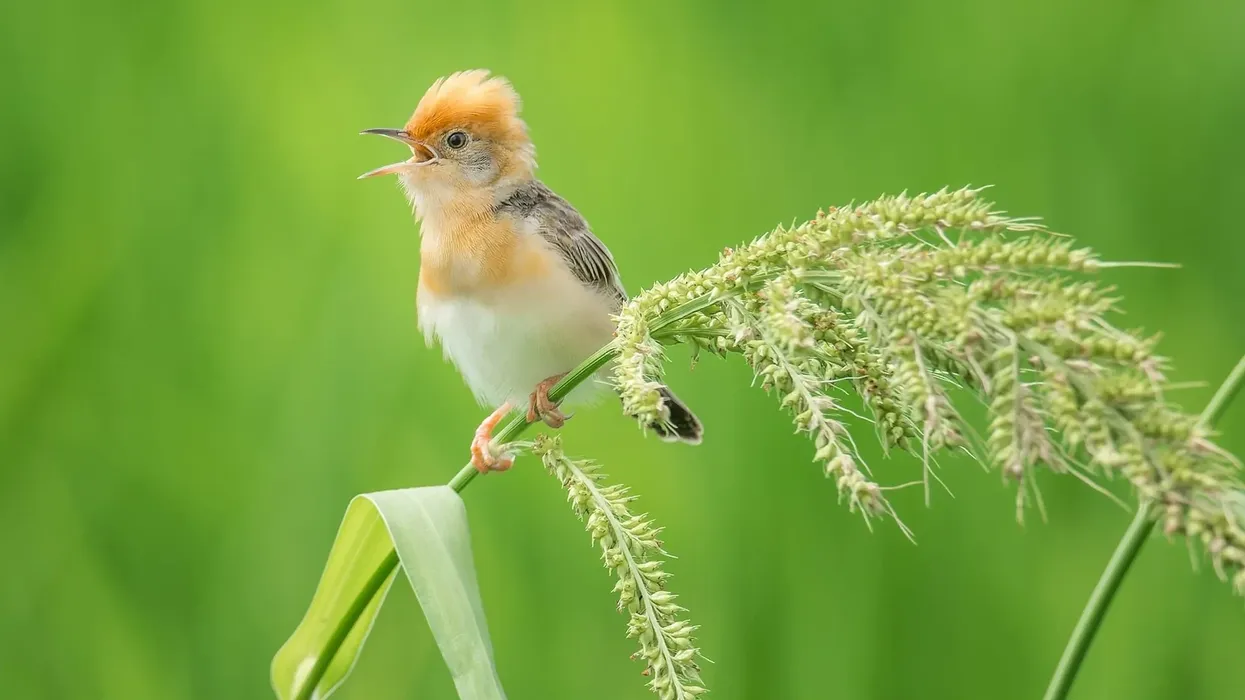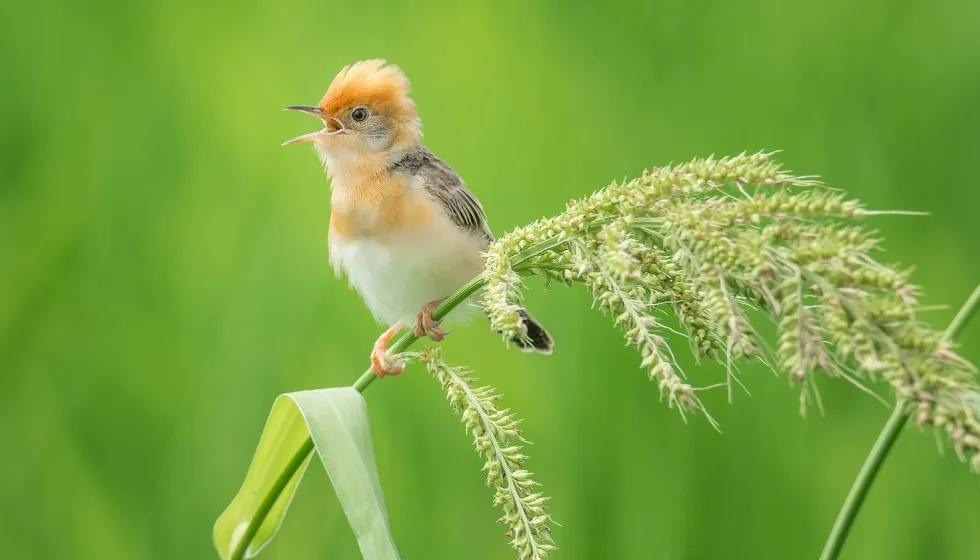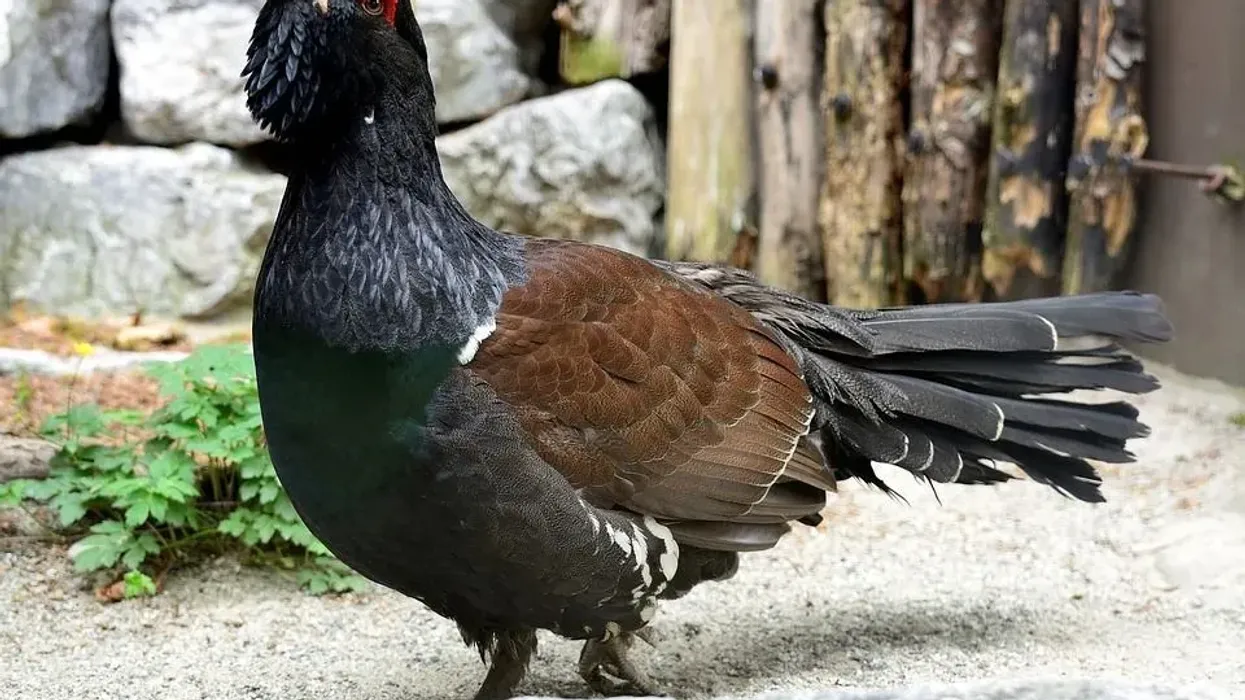The tiny golden-headed cisticola with its orange-colored crown resides in the grasslands of Australia. The golden-headed cisticola (Cisticola exilis) also finds a home in around 12 plus Asian countries.
Along with this bird's other specialties, this bright-headed cisticola is renowned as the 'finest tailor.' Thanks to their nest-building skills, the birds come up with the finest and most rounded nests.
The female Cisticola exilis usually has a soft brown and cream color. However, during the breeding season, the birds appear to be gold-colored.
This dark brown bird is a master at making a series of different sounds, which seems very helpful during their breeding season. The main habitat of these birds is primarily in Australia's northern and eastern areas compared to western Australia.
During the breeding season, the potential breeding males showcase a rather colorful crown in the form of their golden-orange heads.
This species relies on the rainy season for their breeding season. The distribution of golden-headed birds is vast, and their populations are seeing very positive growth.
The non-breeding females in the golden-headed cisticola family appear rather dull during the mating season. Nevertheless, the golden-headed cisticola is very quiet during its feeding time and can be a magnificent garden bird.
We have a lot to reveal about the bright-headed cisticola in this article that you will be sure to enjoy. To give more wings to your curiosity, you can also check out our other interesting articles on robins and superb lyrebird facts to learn more.
Golden-headed Cisticola Interesting Facts
What type of animal is a golden-headed cisticola?
The golden-headed cisticola is a species of bird.
What class of animal does a golden-headed cisticola belong to?
The golden-headed cisticola belongs to the class of Aves.
How many golden-headed cisticolas are there in the world?
The Zitting cisticola is spread over an extensive area, counting from Australia to several other Asian countries. However, roughly about 27 golden-headed cisticolas can be found in a single hectare of their primary habitat. Although, the overall density of this bird varies vastly as they are the resident of many countries.
Where does a golden-headed cisticola live?
This golden body bird enjoys a vast population, covering major grasslands. Countries such as Australia (northern and eastern), India, Nepal, China, Phillippines, Taiwan, Thailand, Timor-Leste, and Vietnam.
What is a golden-headed cisticola's habitat?
The cisticola bright-headed bird likes grassy hills and sub-coastal areas. You can find a general golden-headed cisticola nest in swap margins or irrigated farmlands. A male Zitting cisticola can be easily seen singing from a soft plant among farmlands or tall grass or shrubs.
Who do golden-headed cisticolas live with?
The golden-headed cisticola habitat mainly comprises vegetation that is close to the ground or near rivers.
This rich golden bird with a striking longer tail and soft brown color lives in numeral countries and farmlands. Thus, the species is very friendly with other birds and is also related to many species; one such is the Zitting cisticola, as these birds build their rounded nest in the northern and southern regions.
Thus, this golden-orange head lives closely with the rainbow lorikeet and rainbow bee-eater, and some geese in its natural habitat.
How long does a golden-headed cisticola live?
A bright-headed cisticola can live up to three to four years maximum in the wild or in your family yard.
How do they reproduce?
The breeding season marks a lot of importance for Cisticola exilis. With the start of the season, the bright-headed cisticola starts building its rounded nests around 9.8 ft (3 m) above the ground with soft plants and green leaves stitched together to perfection with spider webs.
During the mating season, breeding males use singing, fluttering, and closing wings to attract females, and breeding the golden-headed results in around three to four eggs with around 32% hatching chances.
What is their conservation status?
This golden-orange head bird is not considered endangered. Contrary to the vast distribution, these birds have a great population, and their conservation status is listed as Least Concern.
Golden-headed Cisticola Fun Facts
What do golden-headed cisticolas look like?
It's effortless to identify a male during the breeding season as they have a striking golden body along with a paler chin. This bird has a black tail which is paler at the tips.
The females can be identified due to their signature cream underpants and black wings. Younger birds look the same however duller compared to the adults of the species.

How cute are they?
These birds are magnificent. Their golden color and brown tint make them a treat for the eyes.
How do they communicate?
Birds mainly use songs, specific sounds, or behavior to communicate among themselves. Various kinds of sounds are also taken into use in birds during their courtship rituals. Although, these birds mainly communicate through songs or by making different types of noises directed toward a threat while guarding the nest.
How big is a golden-headed cisticola?
This dark brown bird is very tiny and weighs around 145 times less than an average kea parrot and 30 times less than the kestrel bird. These birds are very tiny and also look considerably small compared to an average garden bird.
How fast can a golden-headed cisticola fly?
These species move to different locations around various times of the year, mainly their partial migration to countries like China. Hence, these birds are excellent when it comes to flying.
How much does a golden-headed cisticola weigh?
Cisticola exilis weighs around 0.2–0.4 lb (5.8–11.3 g).
What are the male and female names of the species?
Both males and females have the same scientific name, that is Cisticola exilis.
What would you call a baby golden-headed cisticola?
A baby Cisticola exilis can be called a nestling.
What do they eat?
Bright-headed cisticola eat invertebrates such as insects and small slugs.
Are they dangerous?
These birds are not considered dangerous and are often very human-friendly, given they reside in farmlands with a human population. However, careful birdwatching is a must to ensure the safety of both the kids and the birds.
Would they make a good pet?
This species is mostly kept as a garden bird and less as a pet cage bird. Given that these birds love to be active and have good fly, they are considered good gardens or farm birds.
Did you know...
These birds are known as wandering birds in New Guinea and Tasmania.
Different types of cisticola
Close relatives of these birds are sitting cisticola, rattling cisticola, and grey-backed cisticola. These species are mostly found in Australia.
Why is it called golden-headed cisticola?
During the mating season, the breeding males of species showcase a vibrant golden head to attract the females in that region. Thus, this gave them their famous name, that is, the golden-headed cisticola.
Here at Kidadl, we have carefully created lots of interesting family-friendly animal facts for everyone to discover! Learn more about some other birds from our keel-billed toucan facts and golden pheasant fun facts pages.
You can even occupy yourself at home by coloring in one of our free printable golden-headed cisticola coloring pages.









